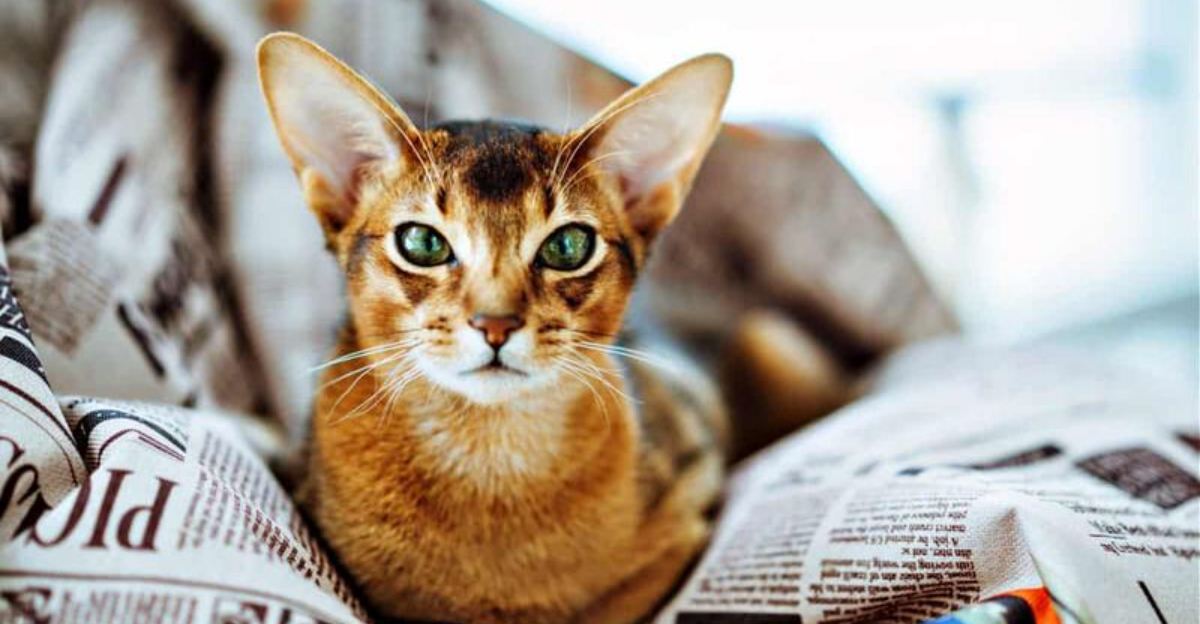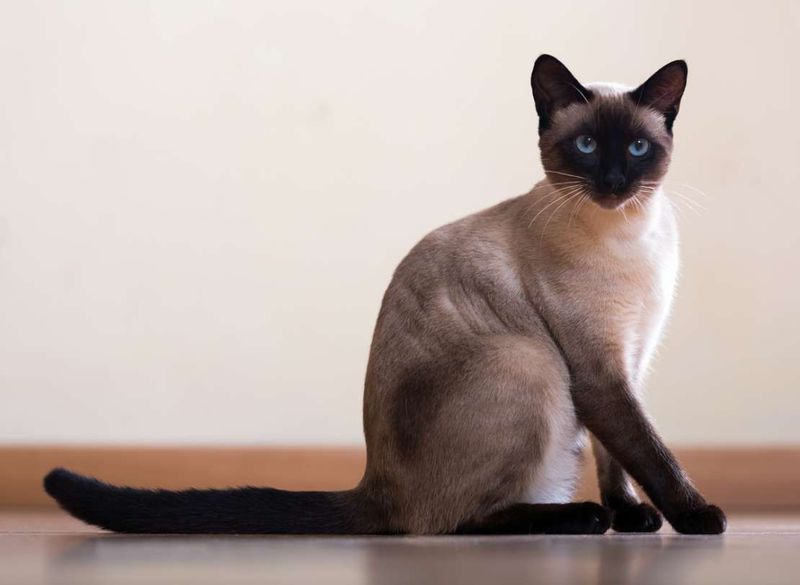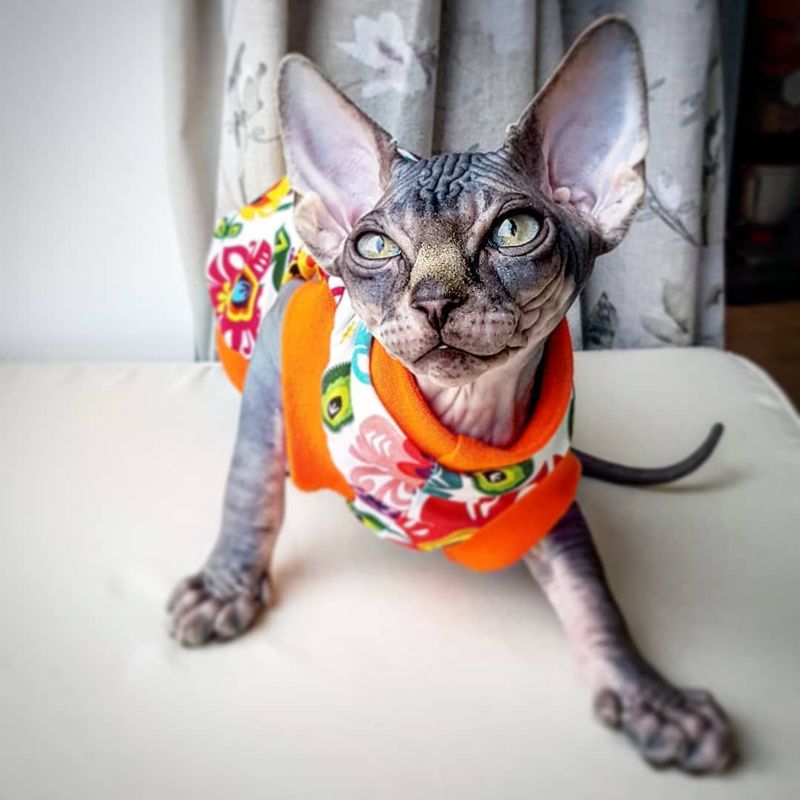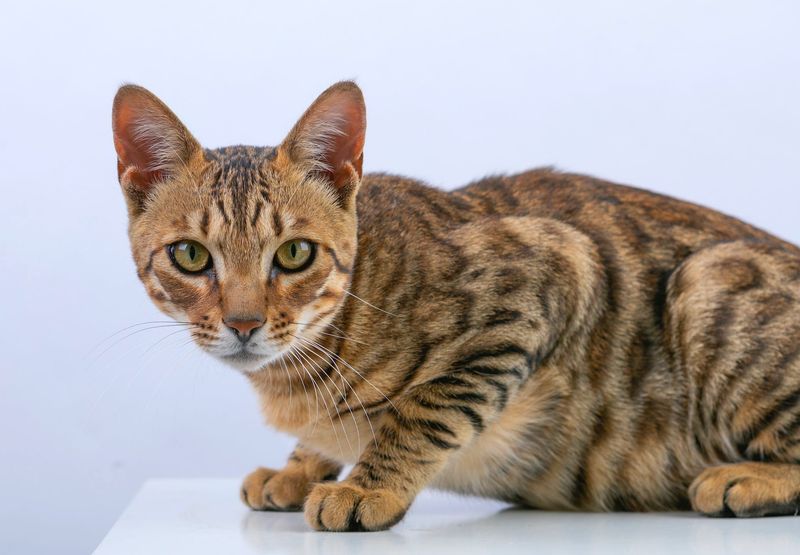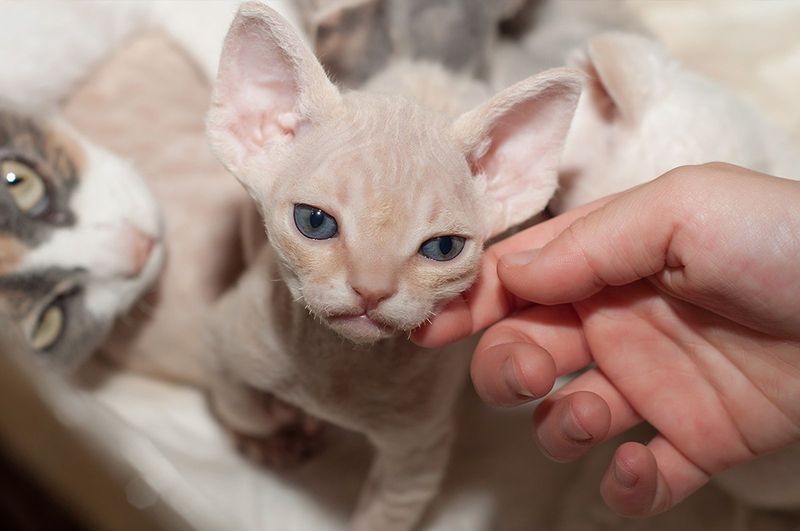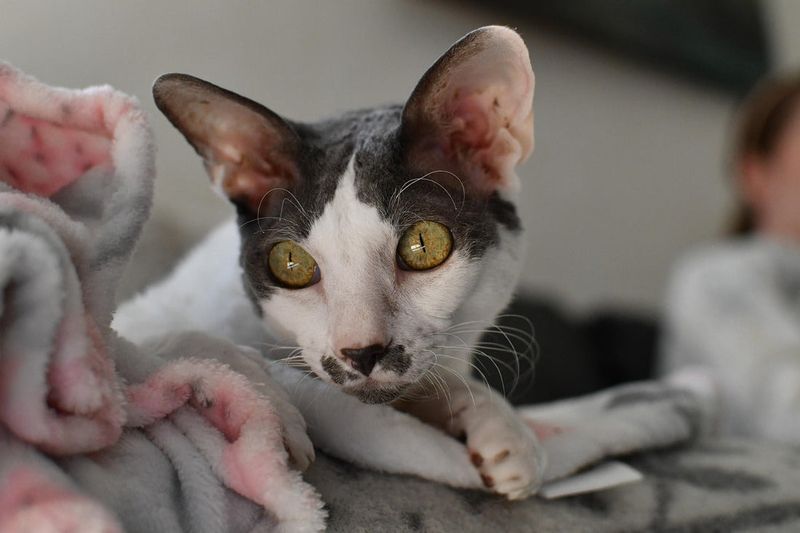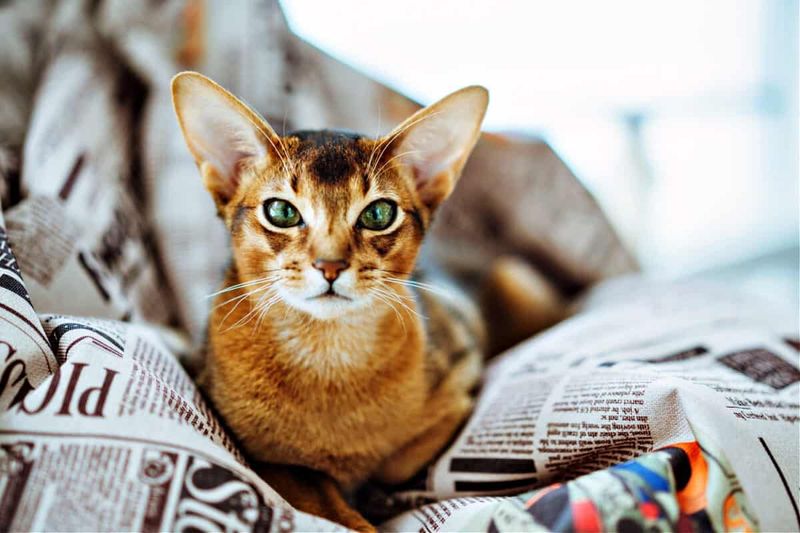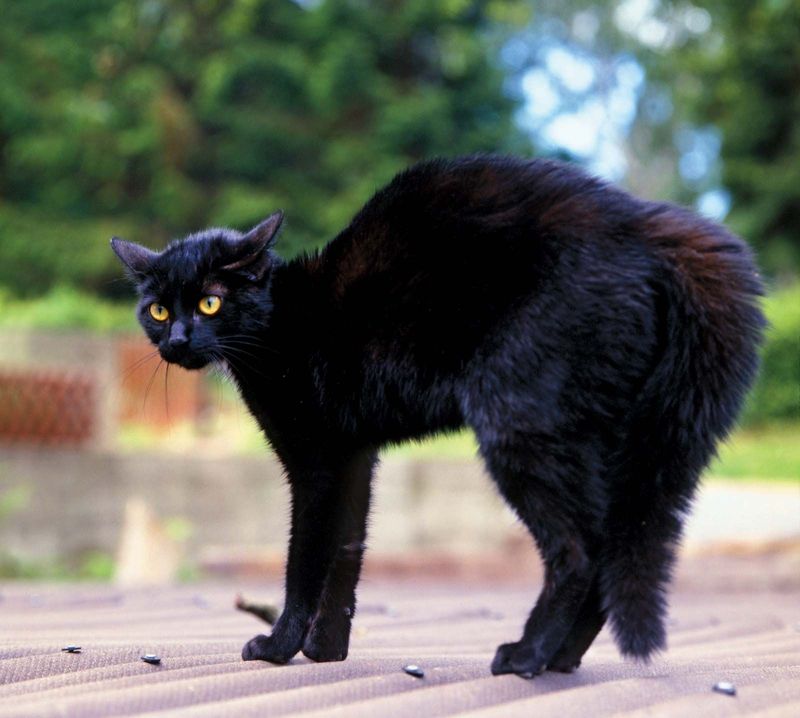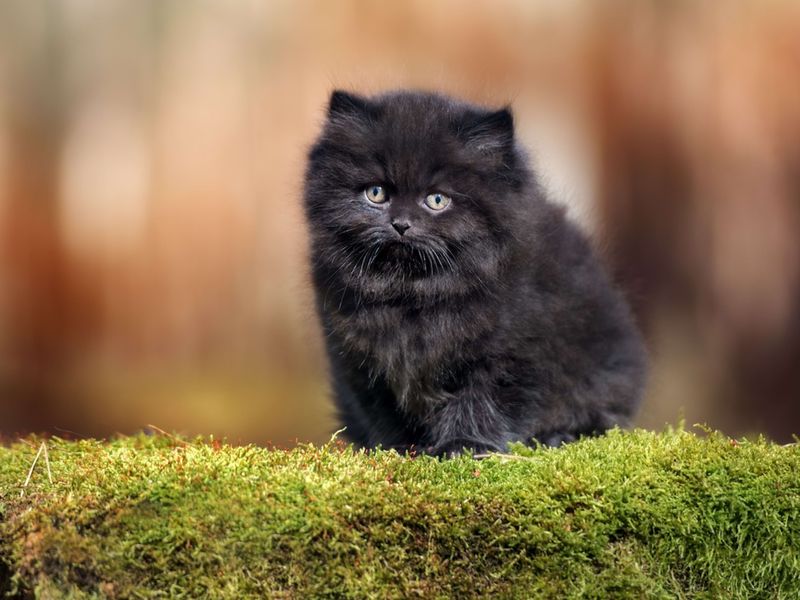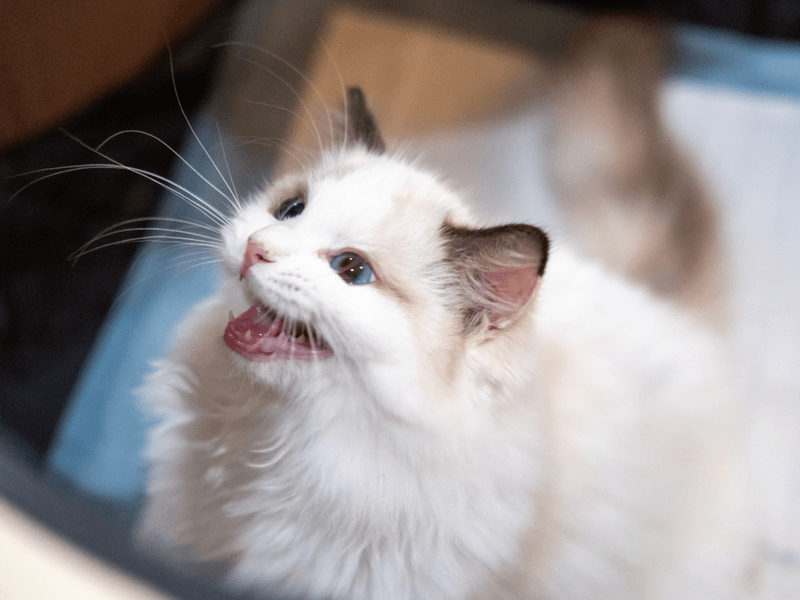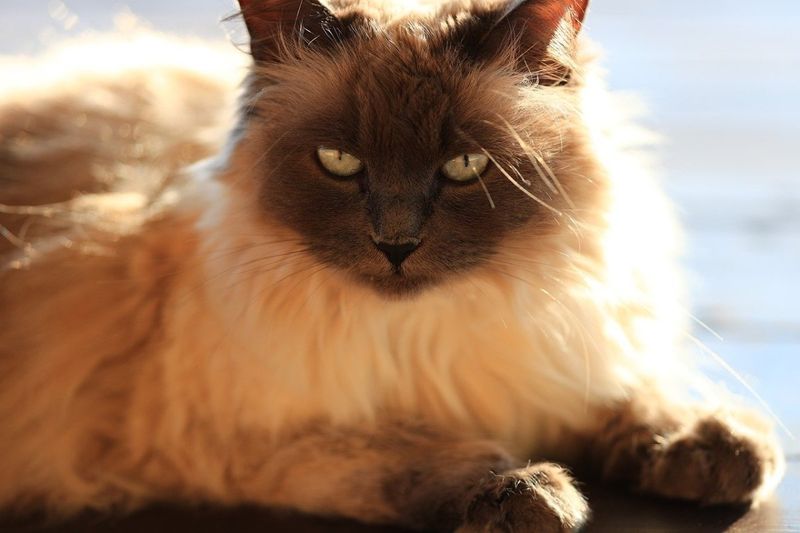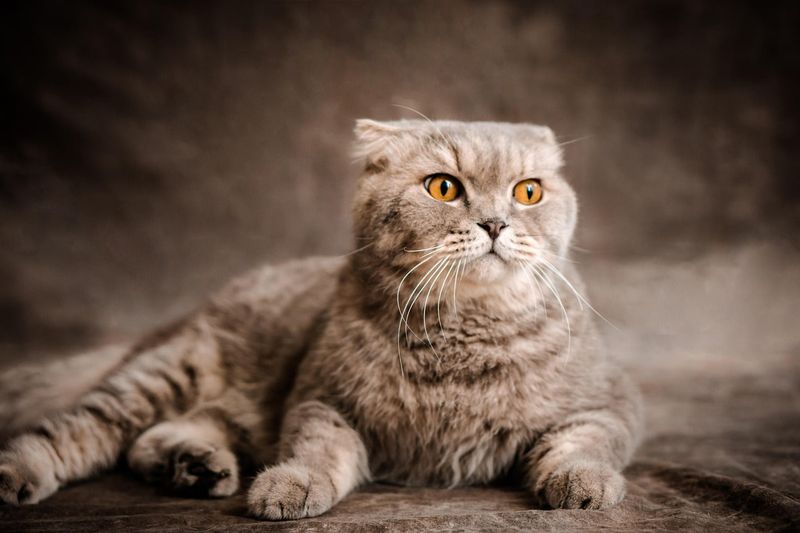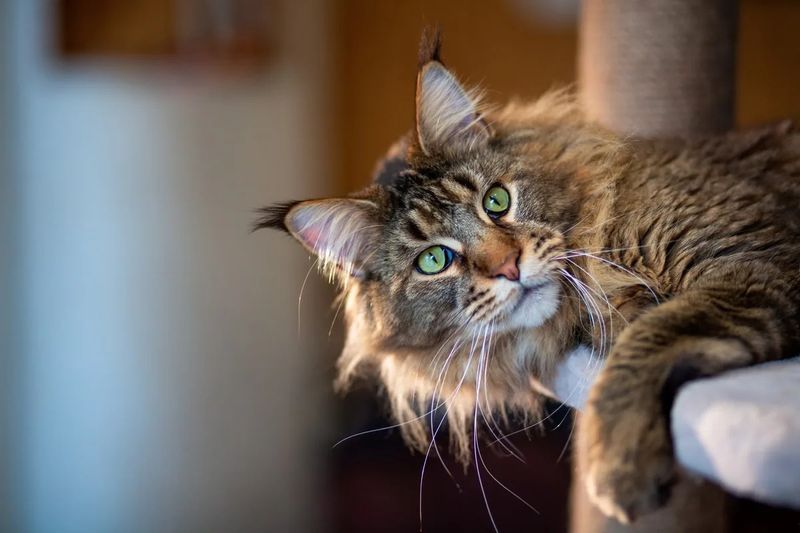📖 Table of Content:
Cat owners know that felines can be independent creatures, but some breeds take neediness to a whole new level. These attention-seeking cats demand constant interaction, playtime, and cuddles from their humans. If you’re considering adopting one of these high-maintenance felines, be prepared for a furry shadow that rarely leaves your side.
1. Siamese
Vocal and demanding, Siamese cats rarely let their owners have a moment of peace. They’ll follow you from room to room, commenting on everything you do with their distinctive loud meows.
These intelligent felines need mental stimulation and interaction throughout the day. Left alone, they may develop separation anxiety or destructive behaviors.
Siamese cats form intense bonds with their humans and don’t handle being ignored well. Many owners describe living with a Siamese as having a furry toddler who constantly needs entertainment and reassurance.
2. Sphynx
Sphynx cats, known for their lack of fur and love of warmth, seek physical closeness not only for affection but to stay cozy. They often burrow under blankets, nestle against your neck, or even curl up under your clothes.
Their lack of fur means they get cold easily, making human body heat irresistible. Sphynx owners often invest in cat sweaters and heated beds.
Beyond temperature regulation, these cats have exceptionally social personalities. A Sphynx will greet visitors, participate in conversations, and demand to be included in all household activities from cooking to showering.
3. Bengal
Wild-looking but domestically needy, Bengal cats have seemingly endless energy reserves. Their active minds require constant stimulation through interactive play, puzzle toys, and training sessions.
Bengals often develop obsessive behaviors when bored, including turning on faucets, opening cabinets, or rearranging household items. Their athletic abilities mean nothing is out of reach.
These cats thrive on routine and attention. Many Bengal owners install cat wheels, climbing structures, and water features to keep their high-energy companions entertained. Without adequate mental and physical exercise, they can become destructive and vocal about their dissatisfaction.
4. Devon Rex
With impish faces and boundless curiosity, Devon Rex cats are eternal kittens—leaping, climbing, and scheming with joyful mischief in every move.
Devon Rex cats form intense bonds with their people and suffer from separation anxiety when left alone. They’re known for riding on shoulders, hiding in pockets, and sleeping under covers with their humans.
These social butterflies don’t just want attention – they need it for their emotional well-being. Devon Rex owners often adopt pairs to ensure their cats have companionship when humans are busy, though this doesn’t completely satisfy their need for human interaction.
5. Cornish Rex
Always on the move and always chasing warmth, Cornish Rex cats use their thin, curly coats as the perfect excuse to snuggle up with their favorite humans.
Their playful nature never seems to diminish with age. Even senior Cornish Rex cats display kitten-like energy, requiring daily play sessions and attention.
Cornish Rex cats are notorious for inserting themselves into whatever activity their humans are doing. Cooking, working, reading – expect a curly-coated companion to demand participation. Their intelligence means they quickly learn which behaviors get them the attention they crave.
6. Abyssinian
Abyssinians are energetic and highly intelligent cats that thrive on mental stimulation. Known for their curiosity and problem-solving skills, they need regular interactive play to stay happy and healthy.
Unlike some needy breeds that demand cuddles, Abyssinians want you to watch and participate in their activities. They’ll bring toys for games of fetch and perform acrobatic feats for an audience.
Abyssinian owners often create enrichment schedules including training sessions, puzzle feeders, and rotating toys to keep their cats mentally stimulated. Without adequate attention, these cats may become depressed or develop problematic behaviors like excessive vocalization or furniture destruction.
7. Burmese
Stocky and affectionate, Burmese cats are often described as “velcro cats” for their tendency to stick to their humans. They’ll follow you everywhere, including the bathroom, demanding acknowledgment and interaction.
Burmese cats are known for their dog-like loyalty and desire to be involved in all household activities. They’ll help with chores, computer work, and cooking – whether invited or not.
Their need for physical contact is remarkable even among needy breeds. A Burmese will try to be touching you whenever possible, preferring laps, shoulders, or at minimum, being in the same room as their favorite person.
8. Tonkinese
With voices inherited from the Siamese and hearts shaped by the Burmese, Tonkinese cats are eloquent companions who speak in meows, purrs, and affectionate glances.
Tonkinese cats thrive on routine and attention from their humans. Schedule changes or being left alone for extended periods can cause anxiety and stress behaviors.
These medium-sized cats are skilled at inserting themselves into any activity. Whether you’re working from home, cooking dinner, or trying to relax with a book, your Tonkinese will find a way to make themselves the center of attention, often using their paws to tap faces when they feel ignored.
9. Persian
Contrary to their regal appearance, Persian cats can be surprisingly clingy and attention-seeking. Their quiet neediness manifests as constant presence rather than loud demands.
Persians develop strong attachments to their favorite humans and prefer environments where someone is home most of the time. Their flat faces and long coats require regular grooming, creating another opportunity for attention and bonding.
These cats are masters of the meaningful stare, silently communicating their desire for attention. Persian owners often find themselves unconsciously responding to these subtle cues, providing the petting sessions and lap time these fluffy companions crave.
10. Ragdoll
Large and floppy, Ragdolls are famous for going limp when held – a trait that matches their desire for physical contact. These gentle giants can weigh up to 20 pounds, making their neediness particularly noticeable when they drape across keyboards or laps.
Ragdolls typically greet their owners at the door and follow them throughout the house. They’re known for their puppy-like devotion and desire to be wherever their humans are.
Despite their size, many Ragdolls insist on being carried around or held like babies. Their need for physical contact doesn’t diminish with age, making them perpetual kittens in giant, fluffy bodies.
11. Balinese
With flowing coats and expressive voices, Balinese cats combine elegance with emotional intensity. Their minimal grooming needs leave more room for what they truly crave—your presence.
Balinese cats are highly intelligent and need mental stimulation along with affection. They excel at training but use their smarts to manipulate owners into providing more attention.
These cats form deep bonds with their families and don’t do well when left alone for long periods. Many Balinese owners report their cats waiting by the door before they arrive home, somehow knowing their schedule and anticipating their return.
12. Scottish Fold
Sweet-faced and clingy, Scottish Folds with their distinctive folded ears have personalities as unique as their appearance. They form strong bonds with their humans and prefer constant companionship.
Scottish Folds are known for their tendency to sleep in odd positions, often as close to their humans as possible. They’ll contort themselves to maintain physical contact even during sleep.
These cats are moderately active but intensely social, preferring interactive play with their humans over solo activities. Scottish Fold owners often describe feeling watched, as these observant cats monitor their humans’ activities, waiting for opportunities to participate or receive attention.
13. Maine Coon
Gentle giants with dog-like personalities, Maine Coons combine size with neediness in an endearing package. Despite their independent reputation, many Maine Coons develop intense attachments to their humans.
Their large size (up to 25 pounds) makes their presence impossible to ignore, especially when they decide to sit on laps, shoulders, or chests. Maine Coons are known for their chirping conversations and trilling sounds when seeking attention.
These cats often enjoy water play and will join their humans in the bathroom, pawing at shower curtains or watching sink activities with fascination. Their social nature means they typically greet visitors and participate in household gatherings.
14. Peterbald
If you’re looking for a cat that never wants to leave your side, meet the Peterbald. Hairless, talkative, and always ready to snuggle, they bring nonstop affection—and commentary—with them.
Peterbalds are extraordinarily people-oriented and suffer from separation anxiety when left alone. They prefer to be touching their humans whenever possible and will use their paws like hands to maintain contact.
These cats are highly intelligent and learn behaviors that gain attention quickly. Many Peterbald owners report their cats learning to open doors, turn on faucets, or even manipulate electronic devices to get a response from their humans.
